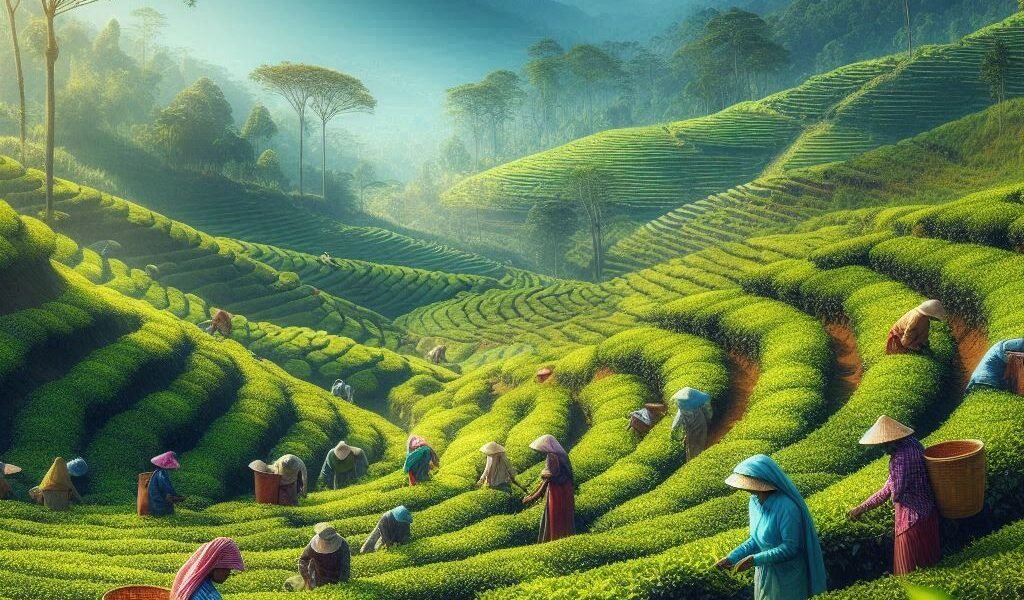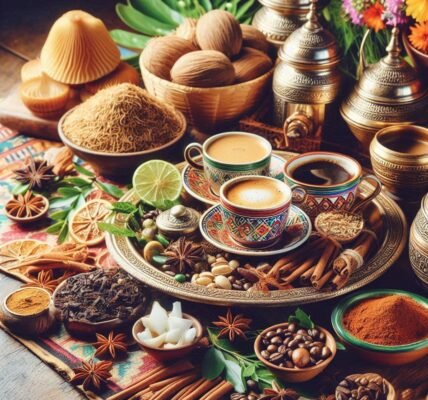Before the comforting aroma of coffee fills your cup or the delicate flavors of tea unfold in hot water, both begin their journey in carefully nurtured plantations. India, with its diverse landscapes and favorable climate, has long been a powerhouse in coffee and tea cultivation, producing some of the finest beans and leaves in the world.
Coffee Cultivation in India: From the Hills to Your Cup
India’s coffee story dates back over 350 years when Baba Budan, a Sufi saint, smuggled seven coffee beans from Yemen and planted them in the hills of Karnataka. Since then, India has become one of the largest producers of coffee, known for its shade-grown varieties that balance boldness and smoothness.
Key Coffee-Growing Regions in India:
☕ Karnataka (Chikkamagaluru, Coorg, Hassan) – Producing over 70% of India’s coffee, these regions offer the perfect mix of altitude, rainfall, and soil richness, ensuring high-quality Arabica and Robusta beans.
☕ Kerala (Wayanad, Idukki, Travancore) – Known for its Robusta coffee, Kerala’s plantations thrive in humid tropical conditions, delivering beans with deep, earthy flavors.
☕ Tamil Nadu (Nilgiris, Yercaud, Shevaroy Hills) – Produces both Arabica and Robusta, often intercropped with spices like cardamom and pepper, adding unique undertones to the coffee.
☕ Andhra Pradesh & Odisha (Araku Valley, Koraput) – Home to organic Arabica, cultivated by tribal farmers using sustainable farming methods. The high-altitude terrain gives the coffee a mild acidity and fruity notes.
Indian coffee is highly sought after for its balanced flavor profile, often sun-dried and monsoon-washed to enhance complexity. The Monsooned Malabar variety, in particular, is famous for its unique aging process, giving it a smooth, mellow taste with low acidity.
Tea Cultivation in India: A Legacy of Flavor
India is the second-largest producer of tea globally, with each region offering distinct flavors and characteristics. The cultivation of Camellia sinensis in India dates back to British colonial times, but today, Indian tea stands as a symbol of heritage, craftsmanship, and diversity.
Key Tea-Growing Regions in India:
🍃 Assam – The world’s largest tea-growing region, Assam is known for its bold, malty, and brisk black tea, grown in low-altitude plantations along the Brahmaputra River. Assam tea is the backbone of India’s famous masala chai.
🍃 Darjeeling – Often called the “Champagne of Teas,” Darjeeling tea is prized for its delicate floral notes, muscatel aroma, and light golden liquor. Grown at high altitudes, this tea undergoes seasonal flushes, with the First Flush being the most sought-after.
🍃 Nilgiri (Tamil Nadu) – Known for its fragrant and smooth teas, Nilgiri tea is versatile, used in blends and flavored infusions. Its bright, brisk character makes it a favorite for iced teas.
🍃 Kangra (Himachal Pradesh) – A hidden gem in Indian tea cultivation, Kangra produces green and black teas with a mild, slightly sweet flavor profile, benefiting from the Himalayan air and mountain soil.
🍃 Munnar (Kerala) – Producing premium black and green teas, Munnar’s lush hills and misty climate contribute to the unique flavor of its teas.
The Role of Climate & Terroir
Both coffee and tea are heavily influenced by altitude, rainfall, temperature, and soil type. Higher elevations typically result in brighter acidity and complex flavors, while lower altitudes produce full-bodied, robust profiles. Monsoon showers in India create a natural aging process, especially in Monsooned Malabar Coffee and some aged teas.
Sustainable Farming & The Future of Indian Coffee & Tea
With increasing global demand, Indian coffee and tea producers are embracing organic, fair-trade, and eco-friendly farming. The Araku Valley, for instance, has become a model for sustainable coffee cultivation, empowering local farmers and preserving biodiversity. Similarly, organic tea estates in Darjeeling and Assam are focusing on pesticide-free farming to enhance both health benefits and environmental sustainability.
Conclusion: A Labor of Love
The cultivation of coffee and tea is a blend of science, tradition, and passion. From the rolling hills of Coorg to the misty slopes of Darjeeling, every bean and leaf tells a story of dedication, patience, and craftsmanship. The next time you sip on your favorite brew, take a moment to appreciate the journey, one that begins in the heart of India’s rich plantations and ends in the comfort of your cup.
#IndianCoffee #IndianTea #FromPlantToCup #SustainableFarming #CoffeeLovers #TeaTime



